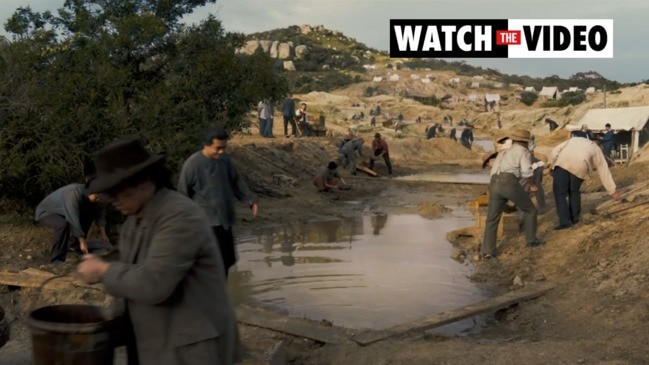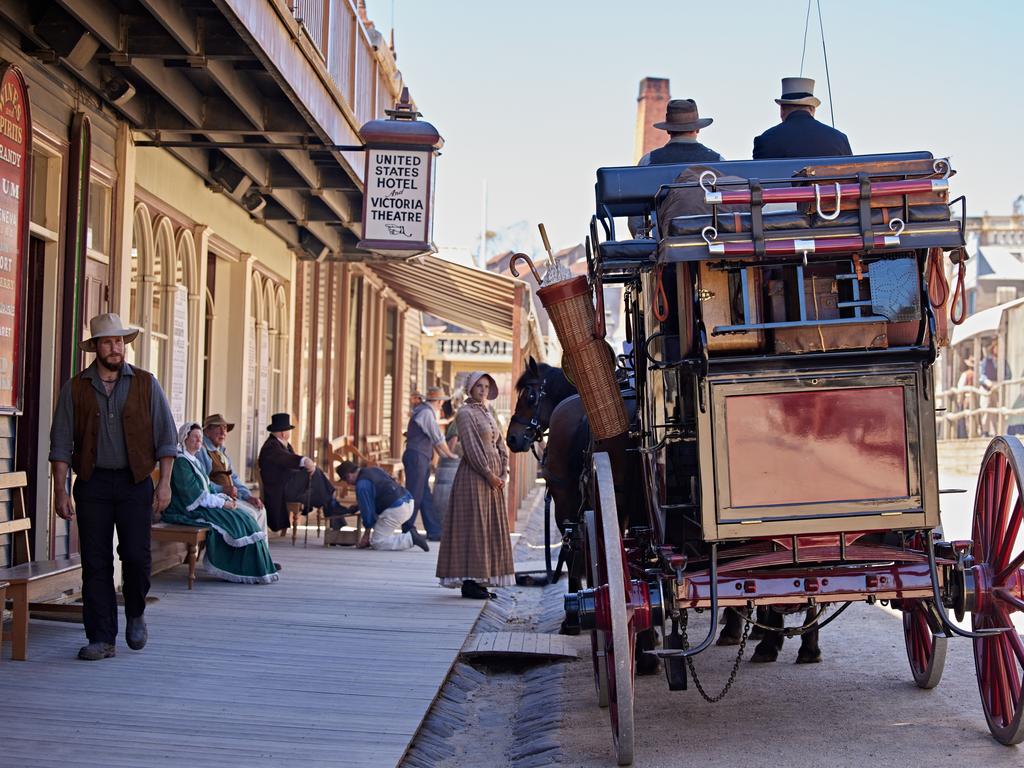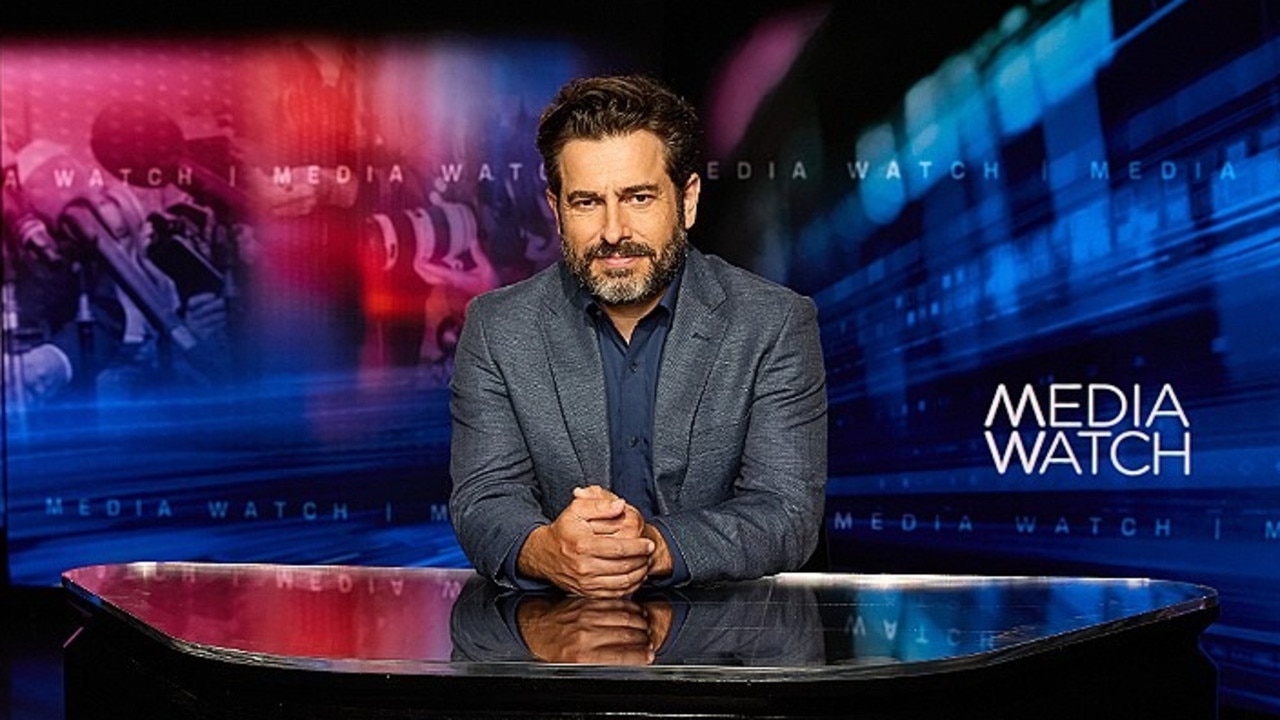SBS series New Gold Mountain rewrites history, and short-changes the audience
New Gold Mountain has disregarded history, and served up revisionist-western tropes. A woke agenda has shifted the storytelling goals from truth-telling to wishful thinking.

REVIEW
According to one of the promos, the SBS series, New Gold Mountain, is the “untold true story” involving a Chinese headman, Fook Shing, and the murder of a European woman in the Victorian colony during 1857.
The story rang quite a few bells for me.
The book about the real 1857 crime, The Chinawoman, was written by my husband, Ken Oldis, a criminal barrister who died in 2016. He spent a decade in the archives to unravel a perversion of colonial justice against two Chinese men. Blood was on many hands: English, Irish and Chinese. Corrupt police, a Chinese police agent and headman, Fook Shing, each played their part. The Chinawoman won a Victorian history award in 2009. It was commended for its unflinching account of this racially-charged miscarriage of justice. It delivered this grim chapter in Chinese-Australian history in the vehicle of a murder mystery.
A few years ago, a TV content developer contacted me, referred by an historian, on the basis that if the TV crowd wanted to adapt Shing’s story, it would be appropriate to discuss the project with me.
I heard from them only briefly. The reason they did not revert to me is now apparent. Somebody involved with this show has obviously decided to invent a better story.
The perplexing result is available on SBS for all to see.
There is much to say about what the series promises, and what it delivers. But the central problem is the ideological use of historical fiction. Egregious colonial misdeeds and racism are being presented in the form of entertainment and we are being invited to draw contemporary parallels. This series, in my view, poses questions about the use and abuse of history.
The risk with historical fiction has always been that Frankenstein’s creature is not supplied with labelled body-parts. We may never know the difference between fact and fiction. We may be seduced into feelings for the creature that we misconstrue as historical insight.
This series has blurred these boundaries and raised the stakes by applying itself to the subject of colonial racism with the aim of drawing contemporary resonances. With this, historical verity matters more than usual. So, for those curious about history, it is worth distilling the fact from fiction.

The true story that inspired this series concerned the robbery and murder of Sophia Lewis in 1857. During her life, she was derided more for her niche clientele of urbane Chinese men in Melbourne’s Chinatown, than the fact she sold sex. Her killers were presumed to be Chinese. This added fuel to populist anti-Chinese hysteria, coinciding with escalating tensions on the goldfields. As the manhunt moved to the goldfields, Chinese leaders continued to stonewall the police investigation. Ultimately, they decided upon damage control, cognisant of their campaign against a punitive new tax targeting Chinese residents.
The police, in turn, took the view that any two Chinese culprits would do. In this, they relied on the collaboration of headman, Fook Shing, and other Chinese conduits, to craft evidence and ensure convictions against two candidates. The police used circumstantial evidence about jewellery stolen from Sophia Lewis shore up the case.
One of the men hanged was innocent. A Chinese police agent and a duplicitous young Irishwoman were among the co-conspirators who got away. Another Chinese suspect escaped justice because of deals done with police behind closed doors. Voices of dissent came from criminal defence barristers, railing against the travesty of justice and advocating the cause of the accused men.
The biggest disconnect in the TV series lies between the visionary premise of viewing colonial history through an authentic Chinese lens and the insensible narrative dreamt up to deliver this. Rather than the gritty truth, or the intriguing Chinese men of flesh and blood involved in the real murder case, the producers have served up revisionist-western tropes and characters filled from central casting. A woke agenda has shifted the storytelling goals from truth-telling to wishful thinking — with glib prescriptions about who the villains and heroes need to be.
In a narrative reorganised along tribal lines, the Chinese characters are innocent of murder, merely victims of a terrible misunderstanding — the whodunnit turns upon a woman’s accidental death. The role of white colonisers is to be brutes — to wear their racism loudly and proudly.
There is no liminal space where the personal politics of assimilation were actually being played out. No criminal defence barristers agitating about the evils of racial prejudice, no Sophia Lewis, enamoured of Chinese men and culture, no English brides thumbing their noses at colonial society by choosing Chinese husbands, no Chinese Christians, anglicising their clothes and their priorities. Shing and his brotherhood’s bad behaviour is confined to internal ranks, so as to eliminate any doubt that this is a one-directional contest between good guys and bad colonisers.
The fictionalised story on screen undermines the producers’ conceit that they might be delivering us an important untold story. While it captures vividly the multicultural backbone of life in the frontier society and the goldrush’s hothousing effect on greed and ambition — beyond this, reality has been jettisoned. With Shing as the narrative’s pivot, the murder mystery is reinvented and backfilled with inclusive melodrama.

As the series frames itself as a revisionist-western, it doubles-down on mixed messaging. There are protagonists in period costume expressing 21st century ideas, alternately slicing or shooting each other up and talking about their feelings. By episode three, we are led to understand that inclusive community-based detective work will crack the murder case. We are reminded pointedly by fictional characters about their brave quests for truth.
This is what retro-fitted empowerment and agency look like for marginalised groups in expensive TV period drama.
In the final episode we are served up a blighted cross-cultural romance, accidental death and swallowed gold nuggets. Never mind the intelligence of the audience. Or history.
The real headman, Shing, was among the small number of Chinese outliers during the 1850s who married European women and decided to stay in the colony. He married his teenage English bride in 1857, the year this series takes place, signalling his evolving relationship with the colony.
In the series, Shing is positioned as the swaggering anti-hero of the revisionist western. His moral ambiguity is framed partly by family loyalty, though predominantly by personal greed. In truth, he was not so venal; the real Shing’s motives for grassing up his countrymen were more complex and interesting. He sold brothers down the river, though not for the money; and his brotherhood was a mutual assistance society, not a criminal racket.

The series strips complexity from the real Shing to deliver us an empowered TV hustler. Viewing him through the prism of western individualism, the series has misunderstood his dilemma as a man of his time and place — still shackled to the codes of collective brotherhood ties, dancing precariously with another world.
History teaches us that the truth is usually messy and that a reductionist approach is apt to mislead. People are rarely one thing, or the other; moral ambiguity is rooted as much in character as the times we live in.
Any number of the real women explored in Clare Wright’s groundbreaking work, The Forgotten Rebels of Eureka, could have brought authenticity to the women on screen. Instead, a trio of fictional female protagonists exercise agency with a 21st century mien.
Apart from being highly idealised, the Aboriginal protagonist, Hattie, is given a role to play in a manhunt that exemplifies the sanitised storytelling on offer. Hattie takes the lead in tracking fictional white outlaws in a manhunt played out in the bush.
The climax of the real manhunt was a different sort of affair, targeting the Chinese fugitive, Hang Tzan, who had already escaped police with a nod and a wink from headman, Shing. Once the Chinese leaders gave their imprimatur to co-operate with the capture of the fugitive, Shing’s society haggled with Hang Tzan’s society over the price to facilitate his capture. This freed all Chinese on the goldfields to ferret him out.
Two hundred Chinese men participated in the hunt, vying for the Chinese reward of £100. He was discovered cowering under brushwood, bound with rope by his captors and led to Jackass Flat to be delivered over to the British.
Belle — the feisty, pioneering newspaper proprietor. Who knew? A woman wielder of multilingual editorial power and seeker of truth. Like all bad revisionist history and good conspiracy theories, there is a scintilla of truth.
Belle’s role model is Clara Seekamp, partner of Henry Seekamp, publisher of the Ballarat Times. Here was a woman who knew how to bolt, to act and to spin personal truths, at the same time as being a feisty and an outspoken progressive.
Henry — bolshie editorialist and champion boozer, was the only man to be jailed in the aftermath of the Eureka rebellion. He was our first editorial martyr — convicted for the criminal charge of seditious libel. During his time in jail, Clara took over the reins at the Seekamp masthead. Granted, some months at the helm is not nothing, but not quite the makings of newspaper maven or investigative journalist.
The series kills off Henry Seekamp’s screen persona because an iconoclastic white male is surplus to the story that needs telling.
The formidable character, Cheung Lei, has arrived with orders from her Triad overlord father in China to shake down Shing’s racket. Well, she might have, if Shing’s brotherhood was a criminal outfit, or if he was on the take, or if Chinese women were striding around the Victorian goldfields in unbound feet. But they were serving life sentences at the family hearth, forbidden by the patriarchs to sail abroad and mix with the great unwashed on foreign soils. On screen, as Cheung Lei jockeys for clan-sponsored power as proxy for her powerful father, we might be mistaken for watching a colonial adaptation of The Godfather or Crazy Rich Asians.
Arguably, the women of Imperial China had the edge over their European sisters in terms of systemic gender oppression during this period. Even if we debate whether European corsets were as bad as bound feet, this does not deliver Chinese mob boss-women onto the Victorian goldfields in the 1850s.
One of the most provocative acts of agency available to European women during the period was to marry Chinese men. These women were the mavericks, casting their vote against the drunken misogynists of European manhood in the colony. In the personal realm, this was marrying up, even if society sneered at their choices. Sophia Lewis had upped the stakes by monetising this provocation against the status quo.
Beyond competition for gold, the gender imbalance among Chinese immigrants in 1857 lies at the beating heart of European hostility toward Chinese men. The fact that Chinese men fraternised at all with European women provoked masculine outrage. The feverish anti-Chinese sentiment was a turf war about gold, sex and cultural otherness. And this was not a one-way battle.
As a case study for enduring themes about Chinese assimilation, the producers picked the wrong cohort to explore the putative theme of belonging. Nearly all Chinese miners during the 1850s wanted to get gold and get home, with no yearning to linger among the uncivilized rabble that passed for colonial society. They came to the colony in clan-sponsored syndicates without women because staying was not part of the plan. The colony was less of a dream destination, than the place where the newest Gold Mountain happened to be. In this, the series misses the point signalled by its own title.
The interesting story of assimilation during this decade belongs to the middlemen with a foothold in both Chinese and English worlds; the urbane Chinese entrepreneurs and Christian interpreters who decided to remain in the colony. These were the men striking deals behind closed doors that sent two of their countrymen to the gallows. They are the bellwethers of early struggles with assimilation into the hostile colony. Shing was one of these men testing out his appetite for personal compromise, a necessary tool of assimilation into a corrupt colonial society.
The genre of choice — the revisionist-western — has blunted any historical insight into xenophobia. We know that racism is toxic. What we didn’t know was how and why in the nascent colony there was something more than a tribal contest going on. The series avoids the cultural nuances about why some men, including a number of Chinese Christians, chose to collaborate with the colonisers against their own. The TV series has averted its gaze from this complicated question, although it was capable of being teased out in mature long-form television.
History as a discipline will always be constrained by its obligation to the evidence. In this, TV period drama parts company, having artistic licence to invent for dramatic purposes. Still, any claim to authenticity brings some duty to reflect historical realities. There is a line between balancing the historical ledger by bringing the Chinese perspective to the screen and delivering retributive justice through historical fiction. When that line is crossed, we get something more like science-fiction than history. History has never lent itself to retro-fitting; as the novelist L.P Hartley tells us in The Go Between, “the past is a foreign country: they do things differently there”.
The true events that inspired this miniseries concern lives lost by human calculation. This is the complicated issue requiring our attention. Modern agenda-setting will not take us there. Cultural literacy untethered from historical verity will not get us there. Is there any point to historical storytelling without being interested in what actually happened? The subject matter deserves something better than stilted melodrama in a concocted whodunnit.
Invention amounts to avoidance. Mature storytelling requires the nerve to tell it like it was, so we can try to understand the past. In the end, New Gold Mountain’s narrative slant has given us a refraction as unreliable as a carnival funfair mirror. This fictional mash-up aims not to teach, but to preach about 21st century preoccupations while masquerading with the authority of history.
The audience are none the wiser that a significant episode in Chinese-Australian history has been dismembered and re-purposed by TV content developers with an unreliable grasp on the material. When fictional drama is passed off as history to preach a narrative agenda rather than to teach us or to understand what happened, we are all in trouble.
The series has been promoted as a rebuttal of history written by victorious white men and also of whitewashed history. In fact, TV has finally caught up with the creative output of scholarly Australian history, cherrypicked the evidence and improvised. Without the painstaking work of historians in the archives, TV producers would have had nothing to inspire this recent foray into inclusive storytelling.
If only they would read more Australian history. And adapt it more faithfully. And respect the creative contributions of historians to the cultural landscape.
As for the flippant assertion that this series is a rebuke to “whitewashed history” this misuses the term’s proper application to the aboriginal dispossession. There is no moral equivalence between xenophobia and genocide.
The dogma behind the promotion of the series signals that the telling of history is better, or more authentic, when organised along tribal lines. This is a divisive and disingenuous approach.
The dark true story behind the tale spun in New Gold Mountain teaches us about colonial misdeeds and also what is peculiar and different about this period — Chinese immigration is shaped around family groups. As for the universal truths: on balance, justice is less rough now, the quotient of bent cops and miscarriages of justice is less egregious.
Some certainties emerge — over the last 150 years, the Chinese diaspora in Australia has been complex and still evolving — and society is always diminished by racism and its enabler, tribalism.
Catherine Hannebery is a Melbourne lawyer with an MA in History from the University of Melbourne.
New Gold Mountain is available to stream on SBS on Demand





